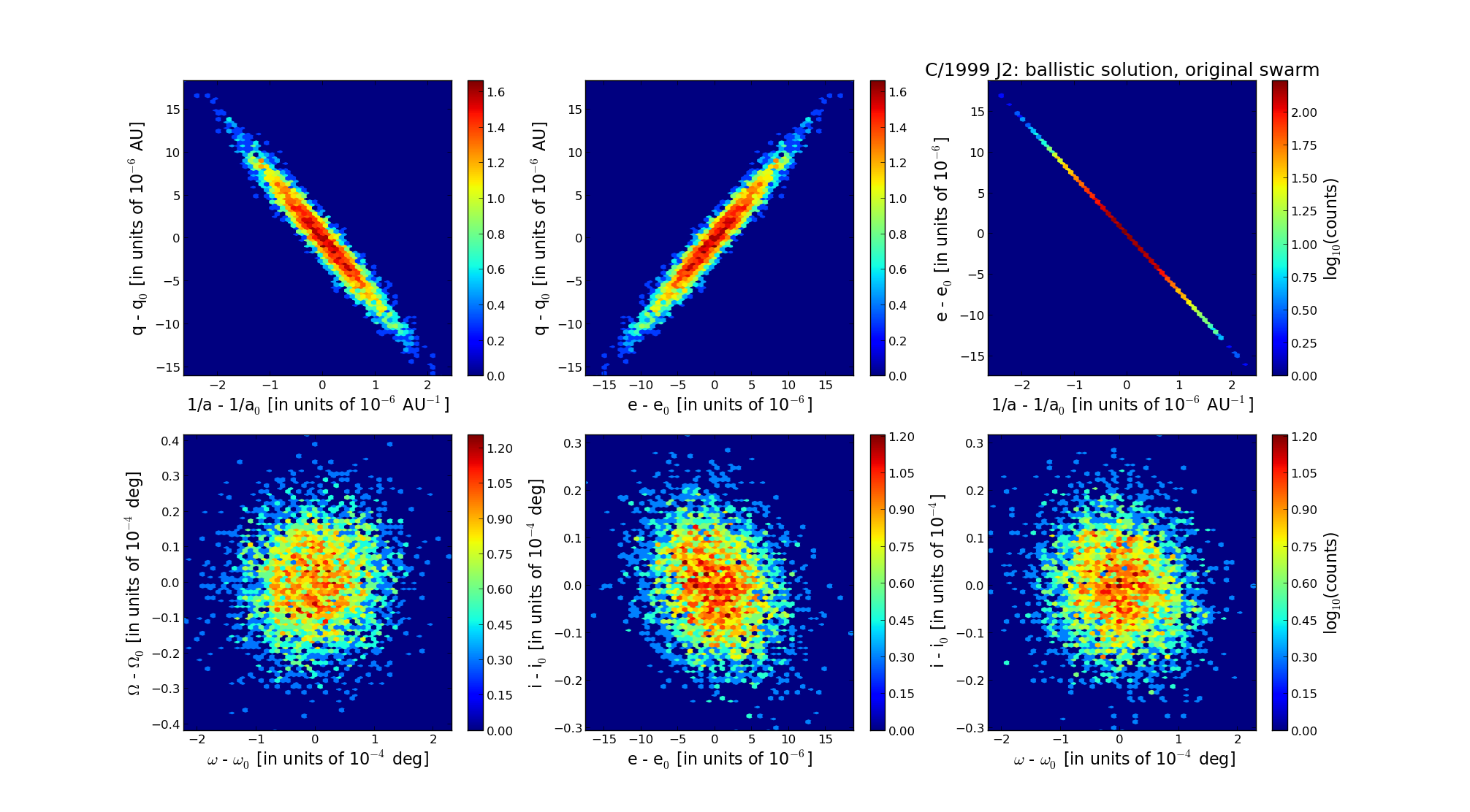| Solar System Dynamics & Planetology Group |
 |
C/1999 J2 Skiff |  |
| Solar System Dynamics & Planetology Group |
 |
C/1999 J2 Skiff |  |
| number of observations | 1001 |
| number of residuals | 1974 |
| data interval | 1999 May 12 — 2003 May 29 |
| rms [arcsec] | 0.53 |
| orbit quality class | 1a+ |
| Epoch (TT) | 20000406.0 | = JD 2451640.5 |
| time of perihelion passage (TT) | 20000406.004255 | ± 0.000912 |
| perihelion distance | 7.10975456 | ± 0.00000468 |
| eccentricity | 1.00103030 | ± 0.00000456 |
| argument of perihelion [deg] | 127.140062 | ± 0.000063 |
| longitude of the ascending node [deg] | 50.042583 | ± 0.000012 |
| inclination [deg] | 86.412706 | ± 0.000009 |
| inverse semimajor axis [10-6 au-1] | -144.91 | ± 0.64 |

| Epoch (TT) | 16910317 | |
| time of perihelion passage (TT) | 20000405.275717 | ± 0.000916 |
| perihelion distance | 7.11363383 | ± 0.00000474 |
| eccentricity | 0.99984298 | ± 0.00000460 |
| argument of perihelion [deg] | 127.111565 | ± 0.000063 |
| longitude of the ascending node [deg] | 50.100055 | ± 0.000011 |
| inclination [deg] | 86.368939 | ± 0.000009 |
| inverse semimajor axis [10-6 au-1] | 22.07 | ± 0.65 |
| Epoch (TT) | 23080103 | |
| time of perihelion passage (TT) | 20000405.791060 | ± 0.000913 |
| perihelion distance | 7.11244479 | ± 0.00000475 |
| eccentricity | 1.00061909 | ± 0.00000460 |
| argument of perihelion [deg] | 127.109177 | ± 0.000063 |
| longitude of the ascending node [deg] | 50.076690 | ± 0.000011 |
| inclination [deg] | 86.364147 | ± 0.000009 |
| inverse semimajor axis [10-6 au-1] | -87.04 | ± 0.65 |